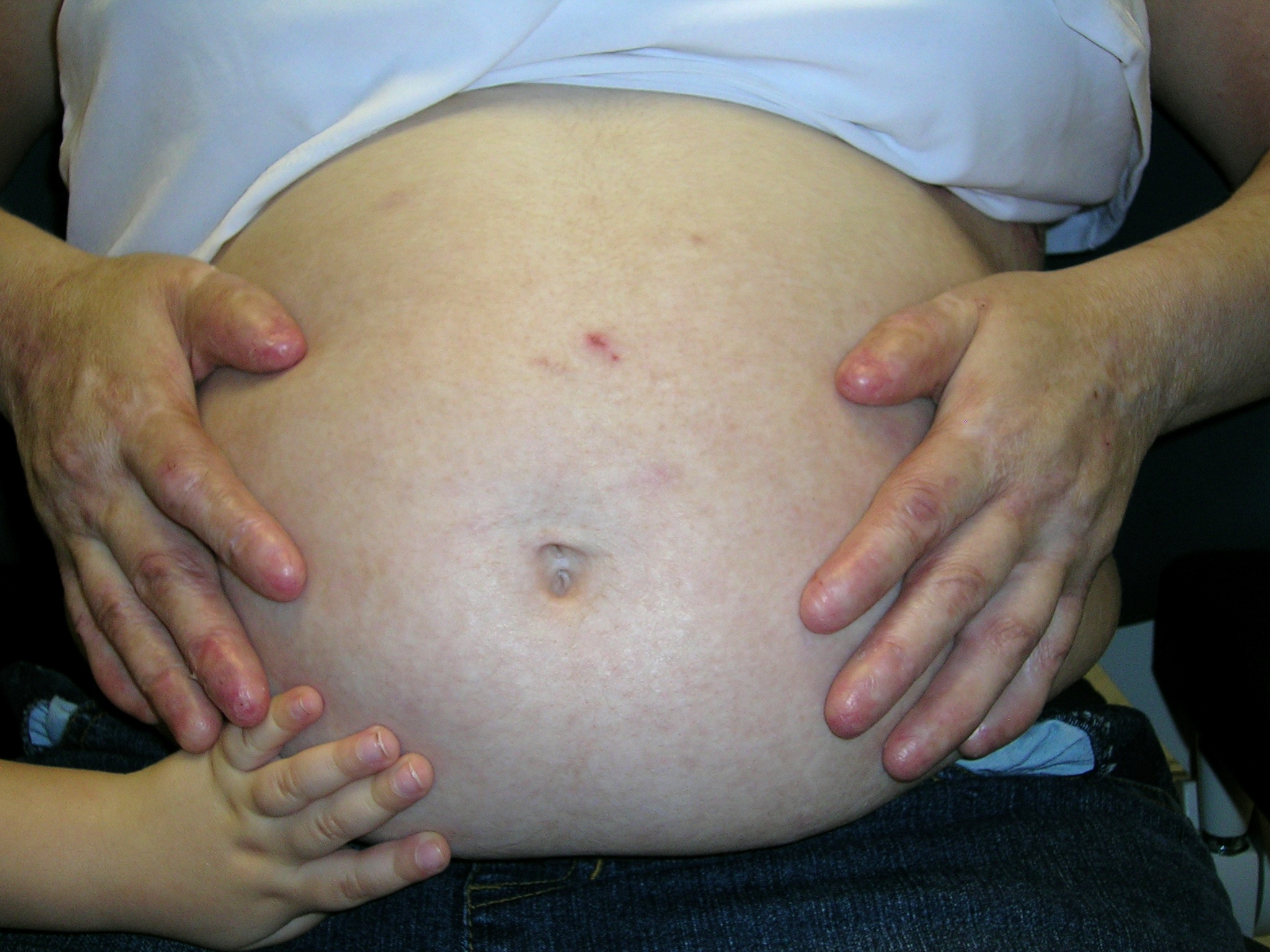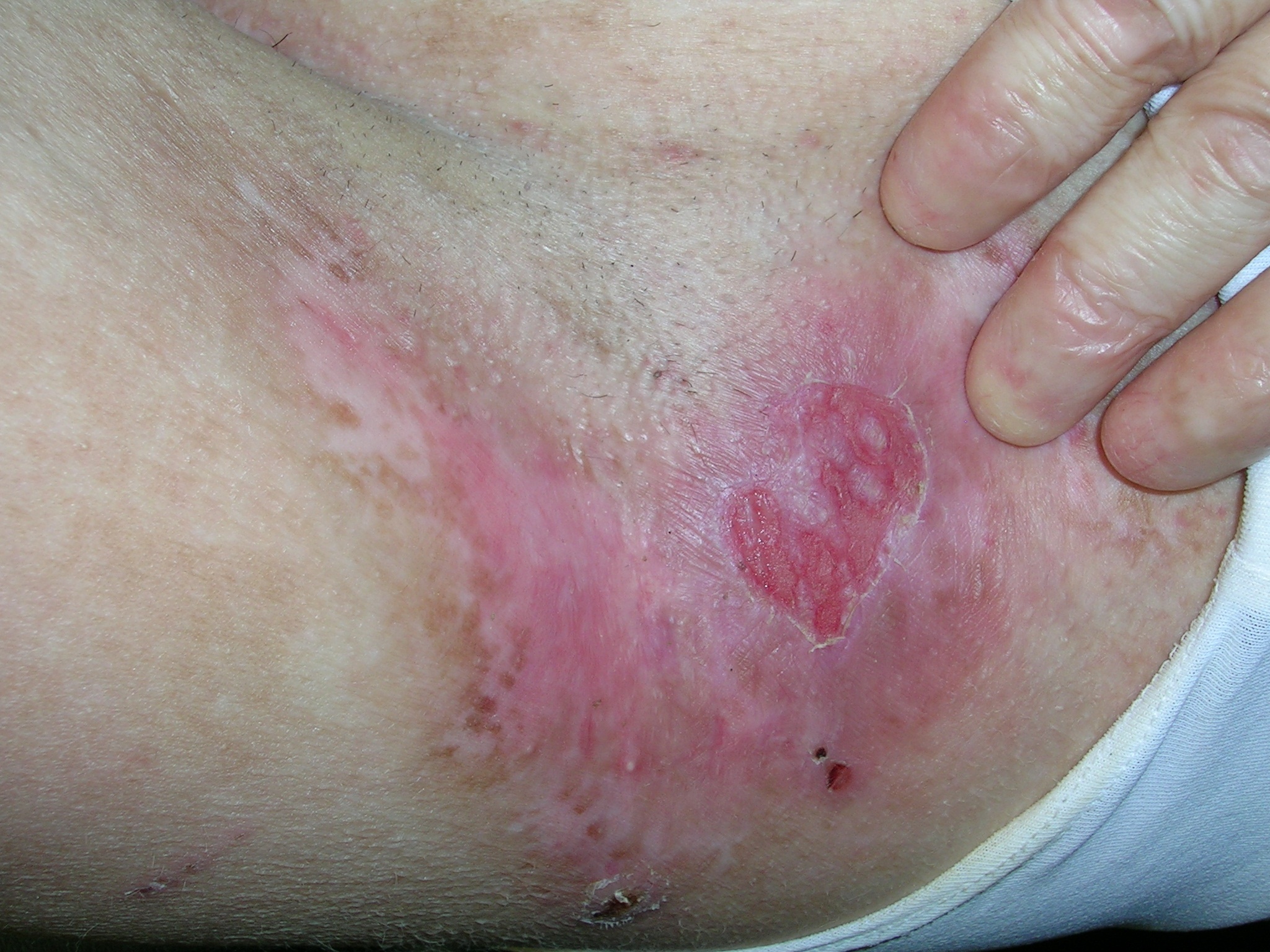Erosions from blistering
A 34-year-old pregnant woman sought treatment for erosions that had developed from blistering in her axilla. (She also had no fingernails, having lost them, and her toenails, as a young child. At the time, she had been diagnosed with a genetic skin disorder.) None of her children were affected. The patient said that she knew her fingernails would never return, but she wanted treatment for her painful axilla.
What's your diagnosis?
 |
 |
This patient had recessive dystrophic epidermolysis bullosa. (Note the erosion in the axilla [FIGURE 1] and the normal hand of the daughter on the mom’s abdomen [FIGURE 2].) Dystrophic epidermolysis bullosa belongs to a family of inherited diseases characterized by skin fragility and blister formation caused my minor skin trauma. There are autosomal recessive and autosomal dominant types. The severity of this disease may vary widely. Onset is in childhood; in later years, severe dystrophic deformities of hands and feet are characteristic. Malignant degeneration is common—especially squamous cell carcinoma in sun exposed areas.
Dystrophic epidermolysis bullosa has vesiculobullous skin separation occurring at the sub-basal lamina level. Repeated blistering of the hands can lead to fusion of the fingers and the so-called mitten deformity.
Skin biopsies can differentiate between the different forms of epidermolysis bullosa: simplex, junctional, and dystrophic. Management involves preventing trauma, careful wound care, and treating complicating infections. Other supportive measures such as pain management and nutritional support are often necessary.
In this case, the family physician prescribed a mid-potency topical steroid ointment to treat the pain and blistering in her axilla and set up a one-month follow-up appointment.
Photos and text for Photo Rounds Friday courtesy of Richard P. Usatine, MD. This case was adapted from: Hara, J. Other bullous diseases. In: Usatine R, Smith M, Mayeaux EJ, et al, eds. The Color Atlas of Family Medicine. New York, NY: McGraw-Hill; 2009:799-806.
To learn more about The Color Atlas of Family Medicine, see:
• https://www.amazon.com/Color-Atlas-Family-Medicine/dp/0071474641
The Color Atlas of Family Medicine is also available as an app for mobile devices. See




